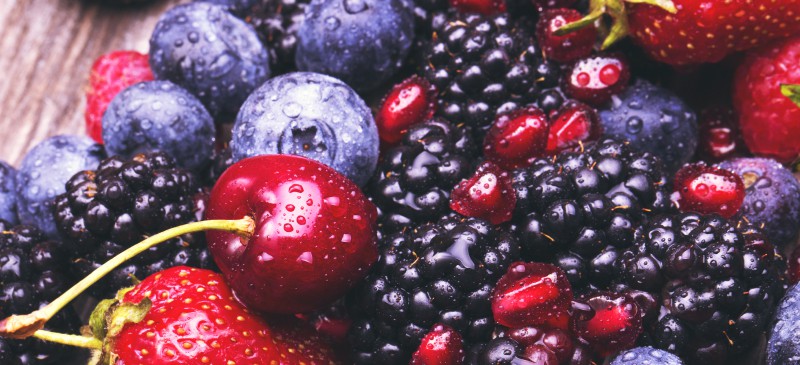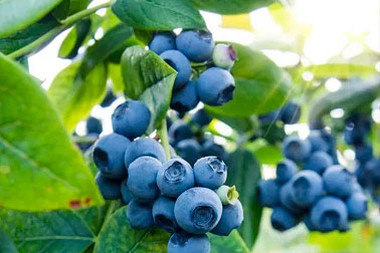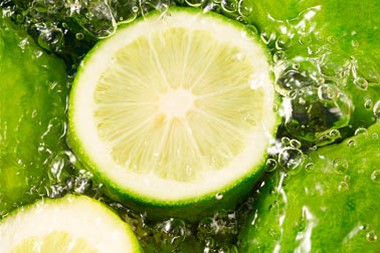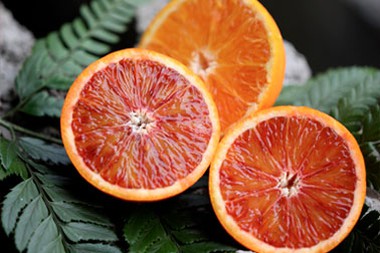Understanding Anthocyanin Extract Powder Nature's Colorful Nutrient Boost
Introduction
In the realm of natural compounds and nutritional supplements, it has garnered considerable attention for its vibrant hues and potential health benefits. Derived from various fruits, vegetables, and plants, this extract is celebrated for not only its visual appeal but also its antioxidant properties and potential positive impact on human well-being. This article delves into the world of it, exploring its origins, properties, uses, and potential health advantages.
The Nature of it
Anthocyanins belong to a class of plant pigments known as flavonoids, which are responsible for the wide array of colors found in fruits, vegetables, and flowers. These pigments contribute to the vivid red, purple, and blue hues present in foods like berries, cherries, grapes, and red cabbage. Anthocyanins play a pivotal role in protecting plants from various environmental stressors, such as UV radiation, pathogens, and oxidative damage.
Extracting these pigments involves a meticulous process that retains their nutritional value. it is typically produced through methods such as solvent extraction, ultrasonic-assisted extraction, or enzymatic extraction. These techniques ensure the preservation of the pigments' potency and antioxidant properties, which are believed to offer potential health advantages to humans.
Nutritional and Health Potential
it is gaining attention primarily due to its antioxidant properties. Antioxidants are compounds that help counteract the damaging effects of free radicals in the body, which are associated with oxidative stress and various chronic conditions. By neutralizing these harmful molecules, antioxidants contribute to cellular health and overall well-being.
Research suggests that anthocyanins may offer a range of potential health benefits. They have been linked to supporting cardiovascular health by potentially reducing the risk of heart disease. These compounds might help improve blood vessel function, regulate blood pressure, and manage cholesterol levels. Additionally, anthocyanins have shown promise in supporting cognitive function, possibly aiding in the prevention of cognitive decline associated with aging.
Beyond these potential advantages, anthocyanins could play a role in managing inflammation. Inflammation is a natural immune response, but chronic inflammation is linked to various health issues. Some studies propose that anthocyanins possess anti-inflammatory properties that could aid in managing inflammation-related conditions.
Incorporating it
The versatility of it allows for its integration into various products, making it convenient for individuals seeking its potential benefits. This powder can be found in dietary supplements, functional foods, and beverages. It can also be used as a natural food coloring agent, replacing synthetic dyes with a healthier alternative.
When incorporating it into one's routine, it's crucial to consider the source and quality of the product. Products derived from organic and non-GMO sources are generally preferred to ensure the highest nutritional content and minimal exposure to pesticides or contaminants.
Conclusion
it stands as a testament to the remarkable potential of nature's colorful compounds. With its antioxidant properties and potential health benefits, this extract has gained recognition in the realm of nutrition and wellness. While more research is needed to fully comprehend the extent of its advantages, the vibrant world of anthocyanins undoubtedly offers a natural and visually appealing path to a healthier lifestyle. As interest in holistic well-being continues to grow, it presents itself as a promising contender in the quest for better health.

Extracting Anthocyanins from Flowers Methods and Applications
Introduction
Anthocyanins are natural pigments responsible for the vibrant colors seen in many fruits, vegetables, and flowers. These compounds not only contribute to the visual appeal of plants but also possess antioxidant properties and potential health benefits. Extracting anthocyanins from flowers has gained significant attention due to their diverse applications in the food, cosmetic, and pharmaceutical industries. In this article, we will explore the methods and techniques used to extract anthocyanins from flowers, their applications, and the considerations for optimizing the extraction process.
Methods of Anthocyanin Extraction
1. Solvent Extraction This is one of the most common methods for anthocyanin extraction. Flowers are crushed or ground to increase surface area and then soaked in a solvent such as ethanol, methanol, or a mixture of water and organic solvents. The solvent breaks down the cell walls, allowing anthocyanins to dissolve. The extract is then separated from the solid plant material.
2. Solid-Liquid Extraction This technique involves using a solid phase, such as resin or adsorbent polymers, to selectively bind and isolate anthocyanins from the flower material. The flower extract is passed through the solid phase, which captures the anthocyanins. Subsequent elution of the anthocyanins from the solid phase yields the purified compound.
3. Supercritical Fluid Extraction In this method, supercritical fluids like carbon dioxide are used to extract anthocyanins. The fluid's unique properties enable it to behave like both a liquid and a gas, enhancing its solvating power and efficiency in extracting target compounds.
4. Ultrasound-Assisted Extraction Ultrasonic waves are applied to the flower material in a solvent. The waves create cavitation bubbles that collapse, generating localized high temperatures and pressures. This disrupts cell structures and facilitates the release of anthocyanins into the solvent.
5. Microwave-Assisted Extraction Microwave energy is used to heat the extraction solvent and flower material. This controlled heating ruptures the plant cells and enhances the release of anthocyanins into the solvent.
Applications of Anthocyanins
1. Food Industry Anthocyanins are widely used as natural food colorants. They can replace synthetic dyes in various products like beverages, candies, and baked goods. Additionally, anthocyanins add a touch of elegance to gourmet dishes, making them visually appealing.
2. Cosmetic and Personal Care Anthocyanins' antioxidant properties make them valuable additions to skincare products. They help protect the skin from oxidative stress, promoting healthier and more youthful-looking skin. Anthocyanin-rich flower extracts are used in creams, lotions, and serums.
3. Textile Industry Anthocyanins have the potential to be used as natural dyes for textiles. Their color stability and environmentally friendly nature make them an attractive alternative to synthetic dyes.
4. Pharmaceutical Applications Anthocyanins' antioxidant and anti-inflammatory properties are being explored for pharmaceutical purposes. Research suggests they could contribute to the development of drugs targeting various health conditions.
Considerations for Optimization
1. Plant Source Different flowers contain varying levels of anthocyanins. Choosing the right plant source is essential for obtaining a high yield of anthocyanins.
2. Extraction Method The choice of extraction method affects the efficiency and yield of anthocyanin extraction. Factors such as solvent type, temperature, and extraction time play crucial roles.
3. Purity and Stability Depending on the intended application, the purity and stability of anthocyanin extracts are important. Additional purification steps may be required for specific uses.
4. Environmental Impact As the demand for natural products increases, sustainable extraction methods become vital. Techniques with lower solvent usage and reduced environmental impact are preferable.
Conclusion
The extraction of anthocyanins from flowers is a multifaceted process that involves various methods to obtain these valuable compounds. These pigments find applications in diverse industries such as food, cosmetics, textiles, and pharmaceuticals. Understanding the extraction methods, their optimization, and the potential applications of anthocyanins is essential for harnessing their benefits and contributing to the development of sustainable and innovative products.
The Role of Ethanol in Anthocyanin Extraction Unveiling Nature's Colorful Palette
Introduction
Anthocyanins, the natural pigments responsible for the vibrant red, blue, and purple hues in various plants, have captured the fascination of researchers, food scientists, and industries alike. These compounds not only lend aesthetic appeal to fruits, vegetables, and flowers but also possess potent antioxidant and health-promoting properties. The process of extracting anthocyanins for various applications requires careful consideration of the solvent used, with ethanol emerging as a prominent choice due to its unique properties and compatibility with both science and industry.
The Science Behind Anthocyanin Extraction
Anthocyanins are water-soluble pigments found in plant tissues, residing in specialized organelles called vacuoles. Extracting these pigments involves breaking down the plant's cellular structure and releasing the pigments into a solvent. The choice of solvent is crucial, as it must effectively solubilize the anthocyanins without degrading them. Ethanol, a colorless alcohol, has proven to be an effective solvent due to its ability to dissolve a wide range of polar and non-polar compounds, including anthocyanins.
Solubility and Selectivity
Ethanol's polarity enables it to interact with both hydrophilic and hydrophobic components of plant tissues. Anthocyanins, being water-soluble compounds, are readily dissolved in ethanol due to their hydrophilic nature. Additionally, ethanol's selectivity plays a significant role in anthocyanin extraction. It can selectively dissolve anthocyanins while leaving behind unwanted components such as lipids and proteins, thus simplifying the purification process.
Preservation of Anthocyanin Structure
One of the primary concerns during extraction is the potential degradation of anthocyanins. These compounds are sensitive to changes in pH, temperature, and light. Ethanol's ability to extract anthocyanins at lower temperatures compared to other solvents reduces the risk of thermal degradation. Moreover, ethanol's mild acidity helps maintain a suitable pH environment, preventing the breakdown of anthocyanins into colorless compounds.
Industrial Applications
The use of ethanol in anthocyanin extraction extends beyond laboratories to industries such as food, cosmetics, and textiles.
Food Industry
Anthocyanins have found a prominent place in the food industry as natural food colorants and additives. Ethanol-extracted anthocyanins provide a safe and eco-friendly alternative to synthetic dyes. The compatibility of ethanol with various food matrices allows for the creation of visually appealing and healthier food products.
Cosmetics and Textiles
In the cosmetics and textile industries, anthocyanins are utilized for their antioxidant properties and vibrant colors. Ethanol extraction ensures that these properties are retained, enhancing the potential benefits of anthocyanin-containing products.
Challenges and Future Directions
While ethanol offers numerous advantages in anthocyanin extraction, challenges remain. Ethanol's high volatility can result in loss during the extraction process. Additionally, the use of large quantities of ethanol may raise concerns about sustainability and environmental impact.
Researchers are actively exploring ways to address these challenges. Efforts are being made to optimize extraction techniques, such as using ethanol-water mixtures to reduce solvent consumption while maintaining efficient anthocyanin extraction. Furthermore, advancements in technology may lead to the development of more environmentally friendly solvents specifically tailored for anthocyanin extraction.
Conclusion
Ethanol's unique properties, including its solubility, selectivity, and ability to preserve anthocyanin structure, make it an indispensable solvent in the extraction of these vibrant and beneficial plant pigments. As industries continue to harness the potential of anthocyanins in various applications, the role of ethanol in unlocking nature's colorful palette remains vital. The ongoing research and innovation in this field will likely lead to improved extraction methods that balance efficiency, sustainability, and the preservation of these remarkable compounds.
please contact us at email: selina@ciybio.com.cn



